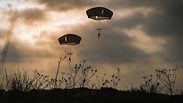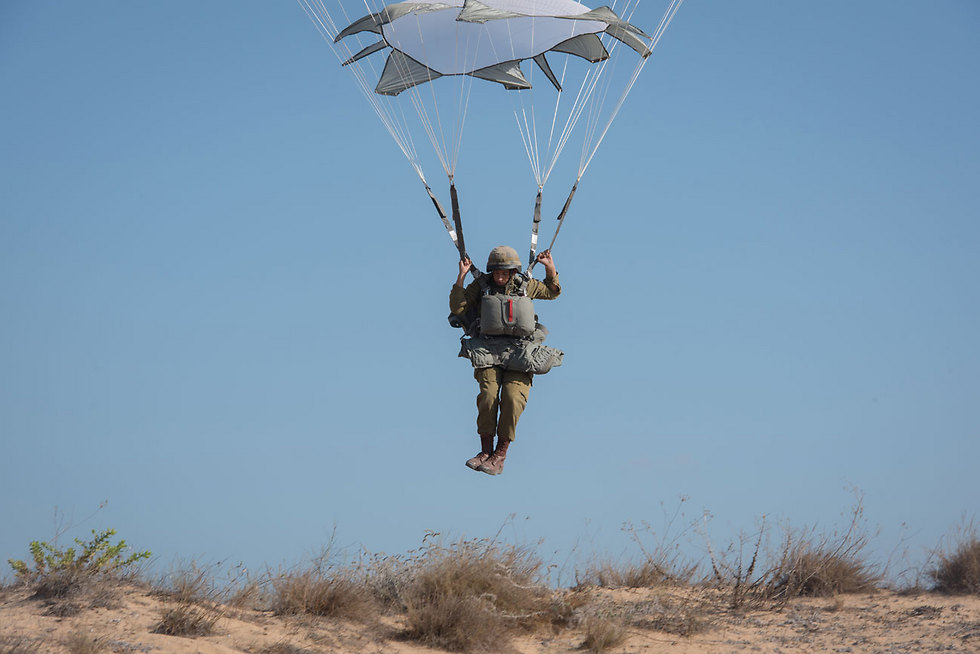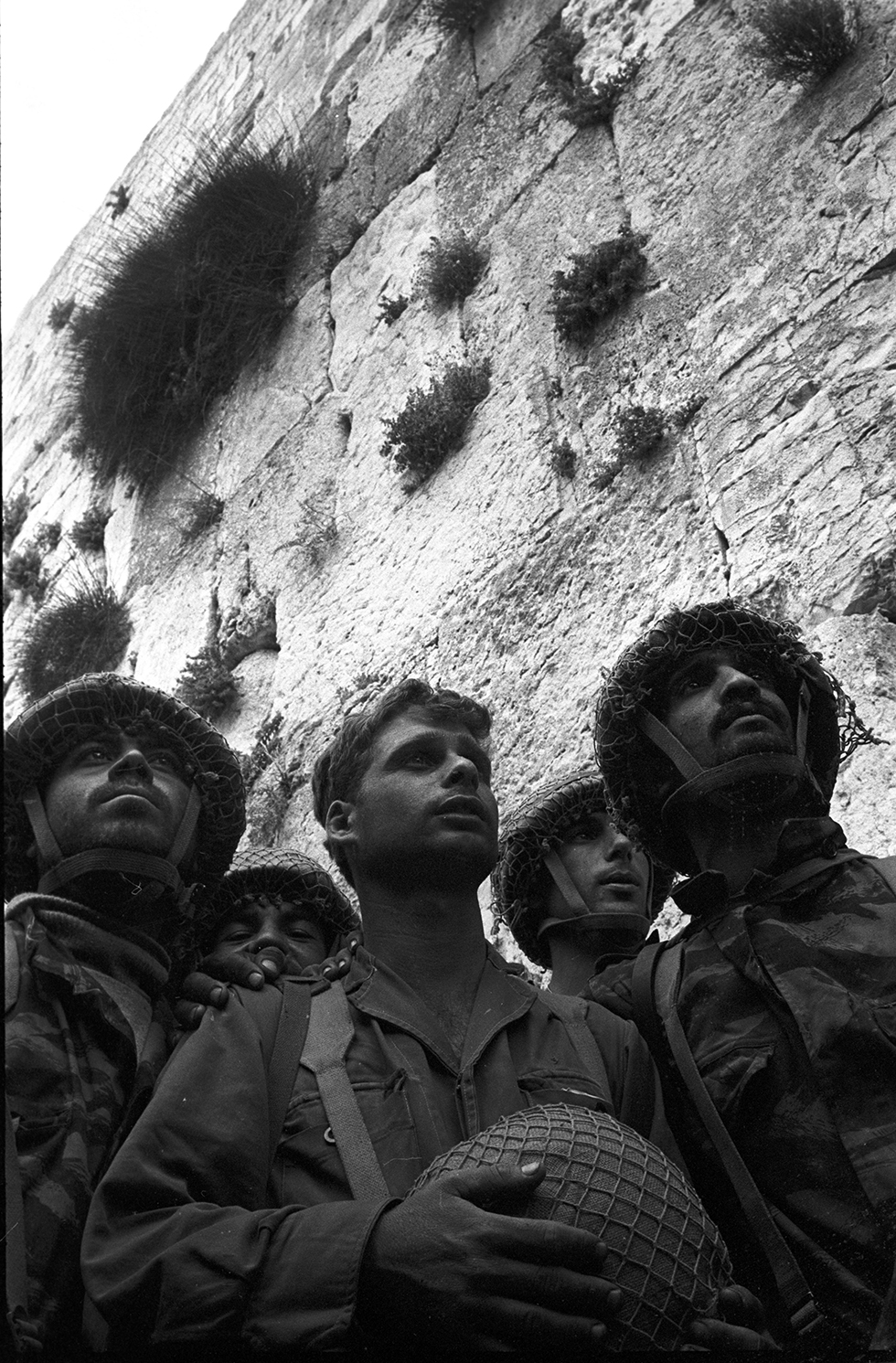

Jumping for joy? An arguably obsolete brigade stays productive
'The Temple Mount is in our hands!' are the immortal words uttered in the Six-Day War by the then-commander of the Paratroopers Brigade; 50 years on, that unit is more respected than any other infantry brigade; however, despite their training for it, the only time they've actually parachuted into battle was in 1956; commanding officers argue the training has psychological importance for the troops.
Fifty years ago, it was the Paratroopers Brigade that fought the pitched battle with Jordanian troops that led to Israel's conquest of the Old City of Jerusalem and the Western Wall. Perhaps the most famous photo of that war is photographer David Rubinger's picture of three paratroopers at the Wall, one holding his helmet, gazing in awe at the site.
As the commander of the brigade, later IDF Chief of Staff Mordechai Gur, approached the Old City and announced to his company commanders: "We're sitting right now on the ridge and we're seeing the Old City. Shortly we're going to go in to the Old City of Jerusalem, which all generations have dreamed about. We will be the first to enter the Old City…"
Shortly afterwards, he broadcast from the commanding headquarter of his division his famous words: "The Temple Mount is in our hands! I repeat, the Temple Mount is in our hands!"
"It's a big honor to be part of the paratroopers," Guy Laron, a professor of international relations at Hebrew University told The Media Line. "They have a signature uniform with a red beret and reddish-brown boots. They were involved in all of the major infantry battles."
But the only time the paratroopers actually jumped during wartime was in 1956. Then almost 400 paratroopers jumped into the Sinai desert to fight the Egyptian army. But as the years have passed, some in Israel question whether Israel should still invest the money and effort to teach paratroopers to jump out of planes.
As part of their training, every paratrooper does a two-week jump school and jumps from a plane at least once. Some paratroopers jump three times—once without equipment during the day, once with equipment during the day, and once with equipment at night.
In an exclusive interview with The Media Line, the commander of the parachuting academy, Lt. Col. Lior Agasi, said that the ability to conquer one's fear and jump out of a plane has a profound effect on Israeli recruits.
"To listen to your commander and jump from an aircraft is the closest experience you can have to hand-to-hand combat," Agasi said. "The soldier needs to face the fear of jumping for a safe place into danger. He has to trust his equipment and his commander."
The soldiers build up to the actual jump gradually, he said. They start on the ground and gradually work their way up. The instructors at the parachuting academy, which is located at the Tel Nof airbase, are trained to encourage recruits who are nervous.
"To jump out of a plane is not natural," Agasi said. "Not everyone was born to do it. A very small percentage give up in advance or freeze at the last minute. In each case, it is the instructor's decision on how to handle it, because if he jumps in this situation he can hurt himself."
Agassi admits that some soldiers are injured while jumping, although almost all of them return to combat service. He said that during the first Gulf War in 1991, Israel considered sending paratroopers into Iraq by air.
"In the end we decided not to use them because there was another way to fight this war," Agasi said. "But we also understand that knowing that someone came from above does something to the spirt of the war and the options that the government has."
In the past two years, he said, Israel has replaced all of its parachutes with a new model, the T-11, known as the Stork in Israel. Its square canopy allows it to carry more weight, while offering a gentle landing.
Article written by Linda Gradstein
Reprinted with permission by The Media Line



















